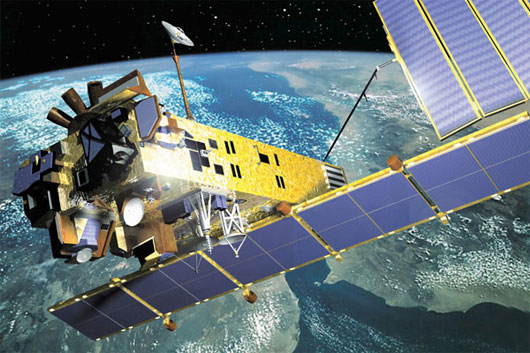Risk of Gravity disaster in space
A disconnected bus-sized satellite from 2012 could explode and release a catastrophic waste cloud in Gravity.
The risk of forming a deadly garbage cloud is waiting on the earth's low orbit, after experts discovered that the Envisat 9m-wide planet is drifting at an altitude of less than 790km from the ground. Observers fear that Envisat may crash into other satellites or collide with space junk. However, the low-altitude project for Envisat to fall freely through the atmosphere is still not feasible due to the high cost.

European experts are trying to solve the difficult problem of Envisat - (Photo: emol.com)
Each year, scientists calculate up to two objects moving about 200 meters above the satellite, and once there was a spacecraft that had to be moved away from Envisat Street. A collision between Envisat and orbits can trigger "Kessler syndrome" - clouds of debris moving at high speeds, which can lead to other collisions. This is the catastrophe that the two main characters in Gravity (played by Sandra Bullock and George Clooney actor) face off during a space walk. ' Envisat's path interferes with most of the orbits of nearby satellites,' Space.com quoted Professor George Fraser, director of Leicester University's Space Research Center (UK), 'Just imagine. You are driving on a highway but you often have cross-section trucks. '
Experts at the University of Leicester say future space missions will be difficult to navigate through the area occupied by Envisat, once the cloud is formed. According to calculations, the trajectory of this dangerous satellite requires 140kg of fuel and a 25-year period for it to move down to a height that can fall naturally to the ground. Specifically, the energy needed to pull the satellite over a distance of 90km requires 2.7 billion joule of traction, equivalent to 143.1 kg of hydrazine fuel. This can be done, if replacing 2 fuel tanks with a capacity of 80kg / barrel. The real problem is how to install new fuel tanks for satellites. Usually a satellite launch costs an average of hundreds of millions of kilograms of fuel, with each kilogram losing tens of thousands of dollars.
In March 2002, the European Space Agency (ESA) launched Envisat, the earth observation satellite, to take on the mission of measuring the atmosphere, ocean, land and polar ice. The satellite's original mission was to photograph the Earth (high resolution) for 5 years, then continue to extend this mission for another 5 years. However, in 2012, Envisat lost contact with the earth and is currently under 790km altitude. This is also the altitude concentrating the most cosmic garbage on the space around the blue planet. Temporarily, the experts have not yet had that satellite solution, but the ESA is studying the possibility of deploying future missions to 'capture' satellites like Envisat in orbit. It is expected that an international conference will be held in the Netherlands in May to assess the technologies related to the e.DeOrbit project, the mission of clearing space.
- The risk of heart attack in astronauts
- Gravity, gravity and things we still think
- Sex in space: self-seeking death
- In a zero gravity environment, do astronauts get sick easily?
- The unfortunate incidents of space travel in history
- Effect of gravity on the immune system
- Astronauts have low blood pressure
- MIT fabricates silk guns to move in non-gravity space
- Space disasters in NASA history
- Video: Why can't a plane fly into space?
- 3D printers will work on the ISS International Space Station
- What did NASA do with animals and plants on orbit?
 Van Allen's belt and evidence that the Apollo 11 mission to the Moon was myth
Van Allen's belt and evidence that the Apollo 11 mission to the Moon was myth The levels of civilization in the universe (Kardashev scale)
The levels of civilization in the universe (Kardashev scale) Today Mars, the sun and the Earth are aligned
Today Mars, the sun and the Earth are aligned The Amazon owner announced a secret plan to build a space base for thousands of people
The Amazon owner announced a secret plan to build a space base for thousands of people